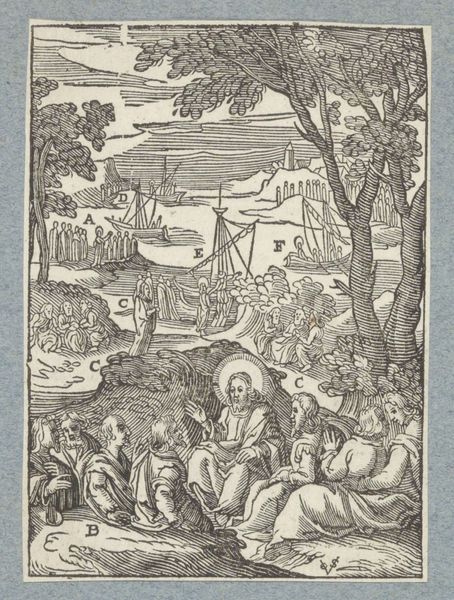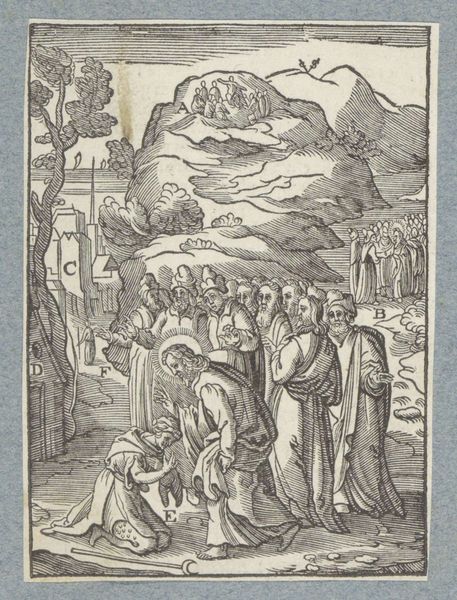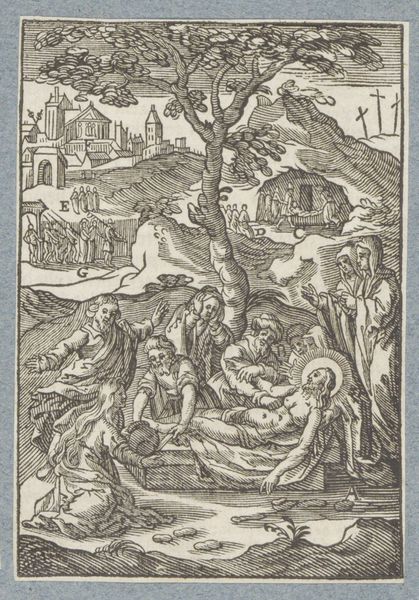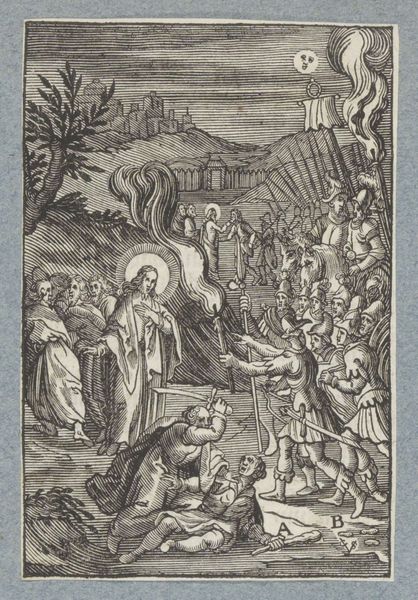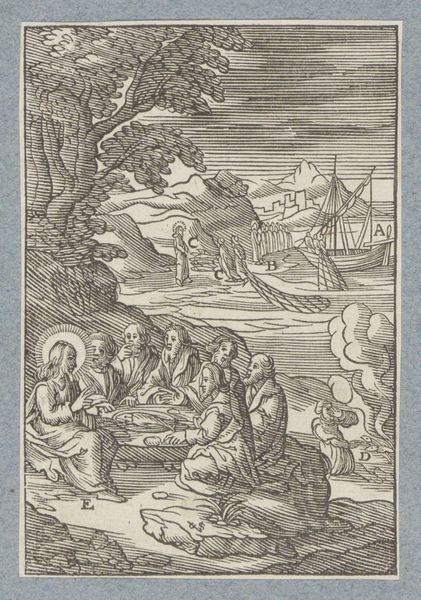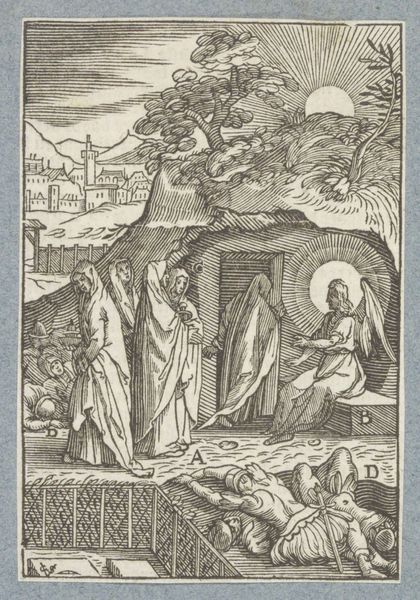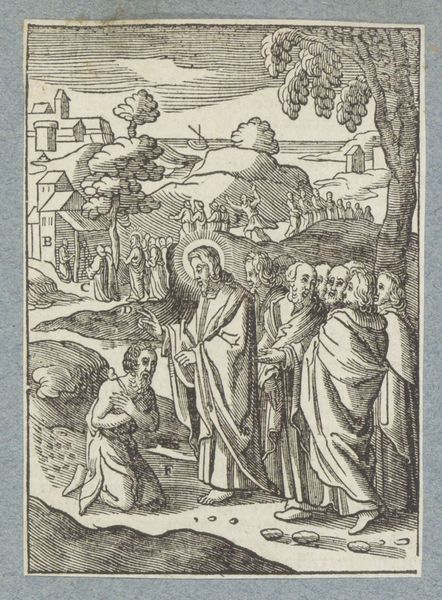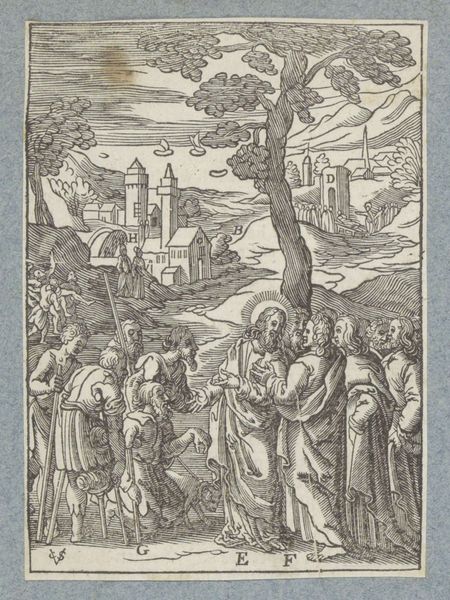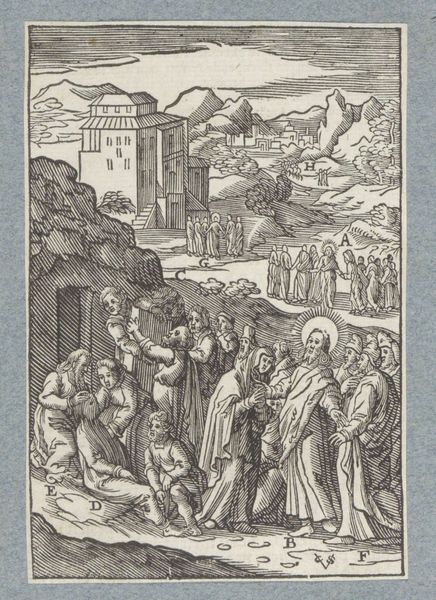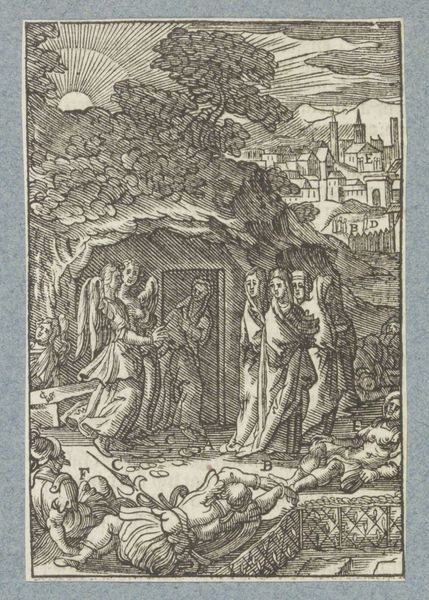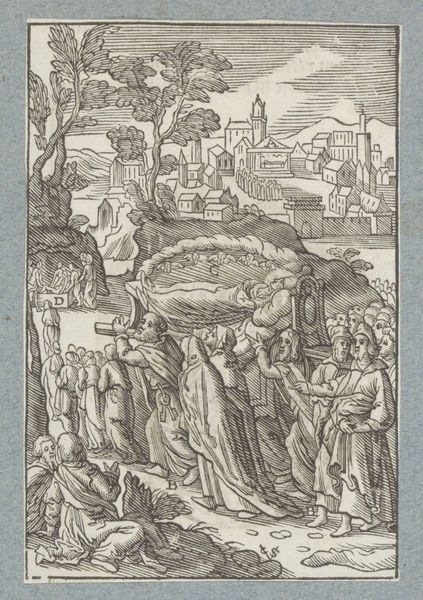
print, ink, engraving
#
baroque
# print
#
figuration
#
ink
#
line
#
history-painting
#
engraving
Dimensions: height 105 mm, width 74 mm
Copyright: Rijks Museum: Open Domain
Editor: This is "Christus geneest een dove man die gebrekkig sprak" from 1629, by Christoffel van Sichem the Younger, currently housed at the Rijksmuseum. It's an engraving, so ink on paper. It strikes me as quite theatrical; everyone seems to be in very specific poses. What's your take on this piece? Curator: Well, let's consider the context of printmaking in the 17th century. Engravings like this were essentially reproducible images, commodities in a burgeoning market. Sichem, by choosing this particular scene of healing, participates in a larger project of disseminating religious ideology. The linear quality of the engraving, the very act of carving the image into the metal plate, is a form of labor directly tied to the message. Notice the level of detail given to the crowd versus the figures of Christ and the man being healed. Editor: That’s an interesting point about the labour and its impact! The process almost flattens the composition but highlights some characters through their clothing, almost to denote social class in some way? Curator: Precisely! Think about who the audience was for these prints. They were buying into not just a religious narrative, but a whole social framework meticulously crafted by the artist's hand. This wasn't just about faith; it was about how faith was produced, distributed, and consumed. How the materiality is related to both economics and class structures of that era. Do you think the prints could make an analogy about how it speaks to the economy through it’s materials? Editor: Definitely. The act of creating multiple copies suggests that Sichem wasn't just creating art; he was engaging in a type of production that would circulate widely, reaching a broader audience and inevitably influencing popular opinion. So it goes back to religious views of this social era? Curator: Yes, and it underlines how art is always embedded in systems of production, consumption, and belief. It provides so much understanding to religious implications. Editor: This has really changed my perspective on looking at art! Curator: Mine too! Focusing on the tangible aspects of its making uncovers some of its social value.
Comments
No comments
Be the first to comment and join the conversation on the ultimate creative platform.
